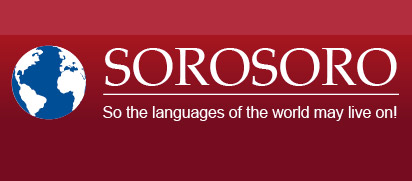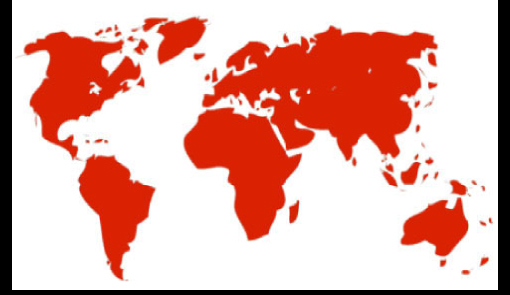Print  |
|

Salishan Languages
Information about the Salishan languages
Where are the Salishan languages spoken?
These languages are spoken in North America mainly in British Columbia on the west coast of Canada, and in Washington State on the west coast of the United States. Cœur d’Alène is spoken in the State of Idaho, also in the United States.
Who speaks these languages?
Salishan language speakers are members of “First Nations” of North America who inhabited the region long before Europeans arrived and the before the creation of the United States and Canada.
Total number of speakers (estimated):
1850 according to UNESCO
2250 according to the site ethnologue.com
Classification
The Salishan language family currently has 14 to 15 languages.
Bella Coola (alternate name: Nuxalk): 50 speakers according to UNESCO and 20 according to SIL
Coastal Group
Central Salish Sub-family
Northern Straits : 65 speakers according to UNESCO
Twana: extinct
North Georgia
Comox-Sliammon: 20 speakers according to UNESCO and 400 speakers according to SIL
Pentlatch: extinct
Sechelt (alternate name: Sháshíshálh): 15 speakers according to UNESCO and 40 according to SIL
South Georgia
Halkomelem: 375 speakers according to UNESCO and 200 according to SIL
Nooksack: extinct
Squamish: 15 speakers according to SIL
Lkungen Subgroup:
Klallam: perhaps 2, but none are native speaker according to UNESCO
Lushootseed (alternate names: Puget Salish, Skagit-Nisqually): less than 5 speakers according to UNESCO
Tsamosane Subfamily
Maritime Sub-Group:
Lower Chehalis: extinct
Quinault: recently extinct according to UNESCO and SIL
Inland Subgroup:
Cowlitz: extinct
Upper Chehalis: extinct
Tillamook: extinct
Interior Group
Northern Branch
Lillooet (alternate name: St’at’imcets): 200 speakers according to UNESCO and SIL
Shuswap: 570 speakers according to UNESCO and 500 according to SIL
Thompson (alternate names: Nlaka’pamux, Ntlakapmuk): 335 speakers according to UNESCO and 595 according to SIL
Southern Branch
Coeur d’Alene (alternate name: Snchitsu’umshtsun): not more than 4 speakers according to UNESCO
(Moses) Columbia (n): 25 speakers according to UNESCO and 75 according to SIL
Okanagan: 130 speakers according to UNESCO and 400 according to SIL
Spokane-Kalispel-Flathead: less than 60 speakers for the 3 dialects according to UNESCO
Comments on the classification of Salishan languages:
The distinction between the language groups of the Interior and the Coast has long been identified.
Nuxalk is classified by some sources with the languages of the coast, but Mithun (1999) notes that although this language is geographically closer to the coastal languages, it is not linguistically closer to those languages than it is to the languages of the interior. In addition the language has many loan words (about 30% of its lexicon) from geographically neighboring languages like the Athabaskan, the Tsimshian, and especially the Wakashan languages. Mithun, therefore, classifies it as an isolate within the Salish family. We have followed this classification as it is generally accepted.
Halkomalen is a collection of a dozen dialects, Klallam a set of three dialects, and Northern Straits, like the Spokane-Kalispel-Flathead, a set of six dialects.
NB: the term “Mosane family” refers to a grouping of languages including the Salishan, the Wakashan, and the Chimakuan languages. The similarities between these three language families, however, are more readily explained by borrowings due to their proximity than by the hypothetical existence of an “ancestor language” from which the three families descended. Some have made a connection between the Salish language and the Kootenai language, an isolate geographically close to Flathead. Although generally regarded as promising, this link has not yet been adequately proved.
Are Salishan languages in danger?
Yes. Of the 23 languages of this family, six have disappeared over the last two decades. The last native speaker of Quinault died very recently and the languages of the Tasamosane sub-family are now all extinct. Klallam no longer has any native speakers either, and it is questionable whether or not Cœur d’Alene is still a living language. As for the Salishan languages which are still active, they are seriously at risk of disappearing within two decades. The vast majority of these languages are classified “Critically Endangered” by the standards of UNESCO (level 4 on a scale of 5). Oknagan is the only language which, according to UNESCO, has not exceeded level 2 (“in danger”), but with only a few hundred elderly speakers its future is no less threatened. Although these languages have been studied and documented for a long time, revitalization projects are just beginning to be implemented.
The Nuxalk Nation, for example, offers Nuxalk courses to their children through their “indigenous school”:
http://www.nuxalknation.org/content/blogcategory/43/71/
Another example is the private institution revitalization of Montana Salish (a dialect of Spokane-Kalispel)
Sources:
Mithun, Marianne The Languages of Native North America. Cambridge, UK: Cambridge University Press. (1999).
Campbell, Lyle. American Indian languages: the historical linguistics of Native America. Oxford: Oxford University Press. (1997)
Site devoted to American Indian languages:
http://www.native-languages.org/
Sites devoted to the defense of indigenous languages and cultures of Canada:
First Voices offers a set of resources, recordings, and learning games for thirty Aboriginal languages in Canada, including the Salish languages.
http://www.firstvoices.ca/scripts/WebObjects.exe/FirstVoices.woa/wa/file?
The Yinka-Dene Institute offers a page devoted to indigenous languages of British Columbia where you can find information on Salish languages.
http://www.ydli.org/fnlgsbc.htm
Website of the Sliammon Nation
http://www.sliammonfirstnation.com/index.php
Website of the Nuxalk Nation
Website of the Sechelt Nation
Website of the Squamish Nation
Website of the Shuswap Nation
http://www.shuswapnation.org/index.html
Website of the Kalispel Nation
Please do not hesitate to contact us should you have more information on this language: contact@sorosoro.org








